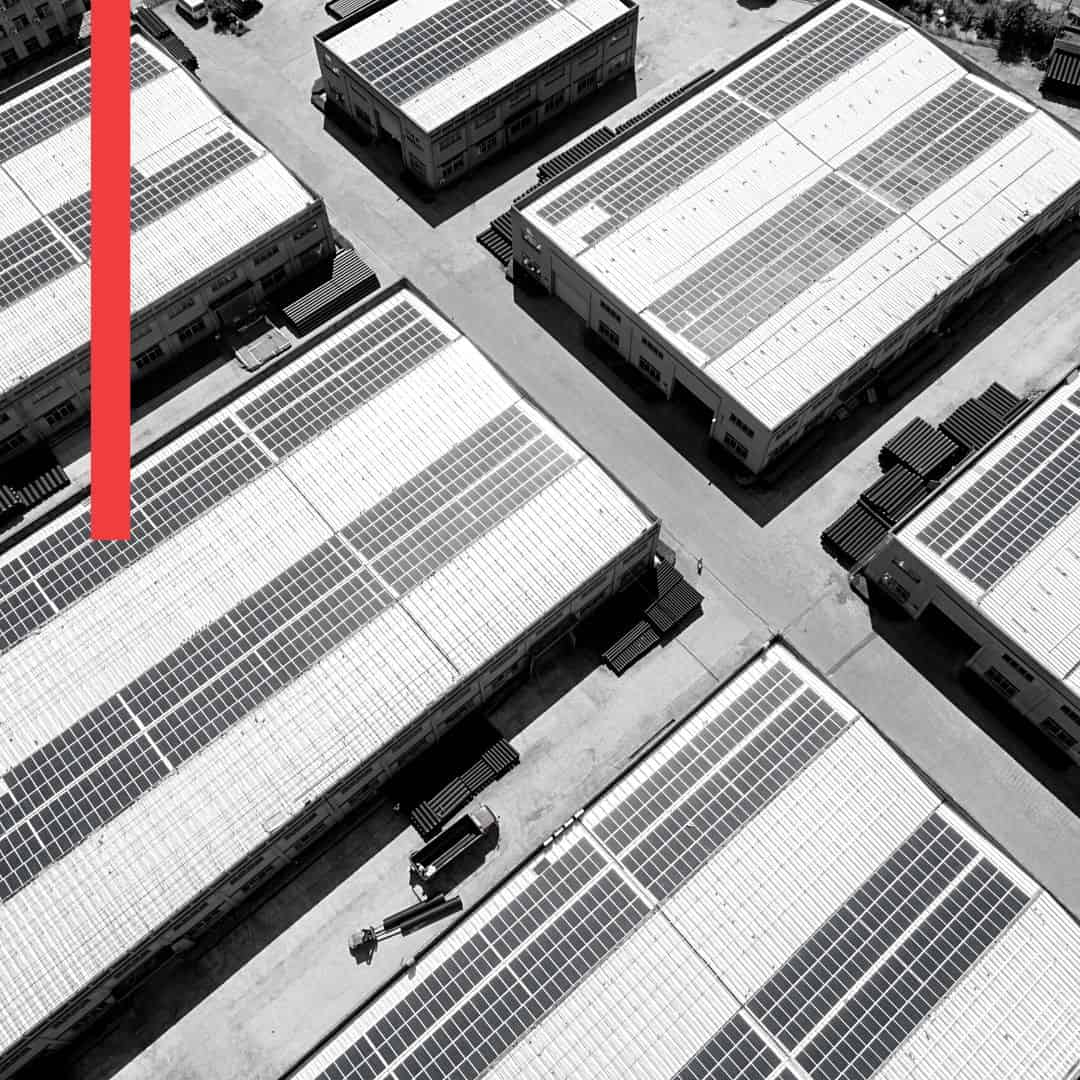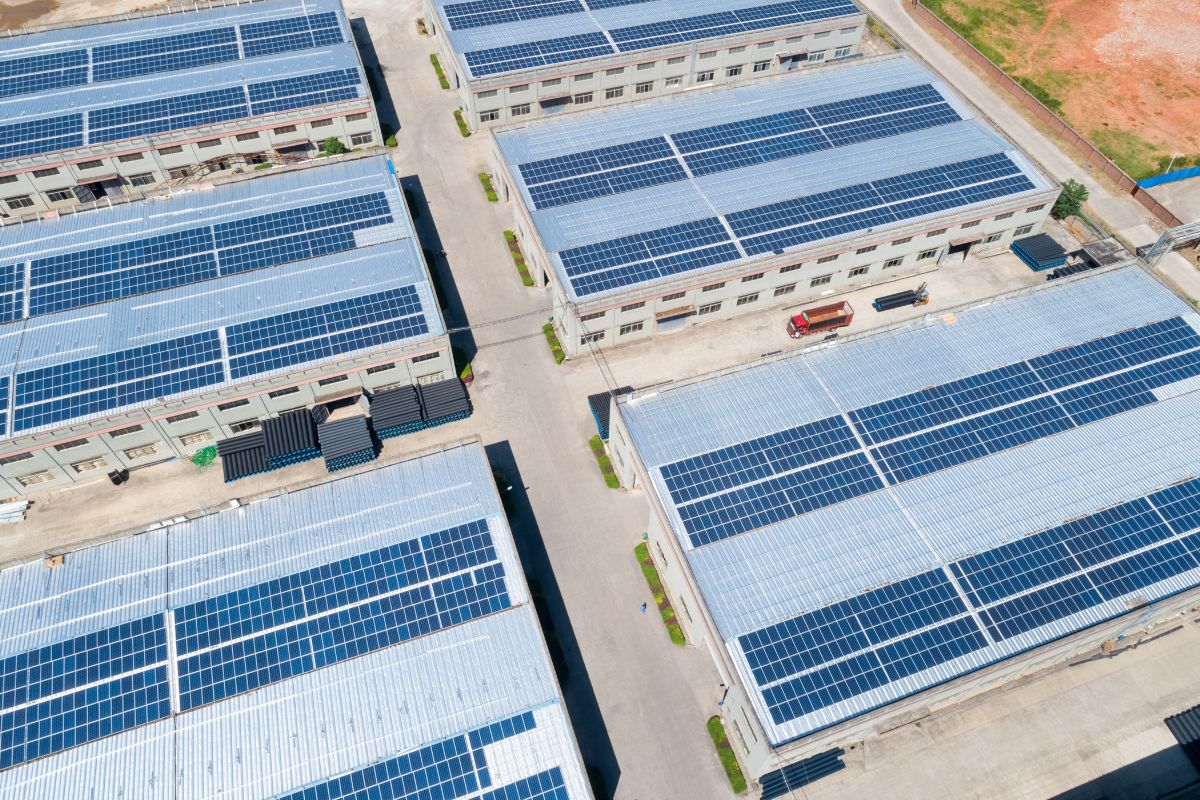Commercial and industrial (C&I) solar is becoming increasingly more accessible across the United States, as businesses and organizations look for ways to save on rising energy costs and improve their environmental sustainability efforts. Compared to residential solar, there is much more to consider with C&I solar, such as varying energy demands, regulatory frameworks, and financing options available for higher-cost, commercial-scale solar installations. In this article, we will answer some of the most common questions about C&I solar to shed light on some of these complexities. Whether you are a business owner, a facility manager, or simply curious about C&I solar power, this article will provide you with the essential information you need to know about this rapidly evolving market.
What is C&I solar?
C&I solar stands for commercial and industrial solar. It refers to the use of solar energy systems to power commercial and industrial facilities, such as shopping centers, office buildings, and industrial complexes. C&I solar is a rapidly growing sector of the solar industry, as businesses and organizations seek to reduce their carbon footprint and energy costs. In addition to providing energy savings, it can also improve a company’s sustainability profile and contribute to the achievement of sustainability goals. Installations can be customized to meet the specific energy needs of a facility, and may also incorporate energy storage systems to increase energy independence and resilience.
Pismo Coast Plaza shopping center features a C&I solar installation
What are the benefits of C&I solar?
There are many benefits to installing solar panels in commercial and industrial settings, also known as C&I solar. One of the primary benefits is the cost savings on energy bills. By generating their own power, C&I buildings can reduce their dependence on the grid and lower their utility bills, which can be especially beneficial in areas where grid power price or reliability varies.
Additionally, C&I solar can also help to reduce carbon emissions and produce other environmental benefits. Solar energy is a clean, renewable source of power that generates electricity without producing any emissions. Furthermore, C&I solar reduces strain on the power grid. The most effective way to reduce strain on the power grid is to increase the number of locations where energy is produced throughout communities closer to where the energy is consumed, and C&I solar offers just that opportunity.
Finally, many properties can rent their rooftops for C&I solar, and increase their rent roll in the process. And, as consumers become more environmentally conscious, they are increasingly attracted to shopping at commercial properties that embrace clean energy strategies, which can have a positive impact on tenant occupancy rates, thus further increasing the rent roll. For multi-tenant C&I properties, like neighborhood shopping centers, malls, and industrial manufacturing complexes, increasing rent roll can directly result in increased property value, producing numerous financial benefits to the property owner.
Can a C&I solar installation provide enough energy to power a facility?
A C&I solar installation can provide enough energy to power a facility, depending on the size of the facility, the size of the facility’s roof space for the solar installation, and the facility’s energy requirements. A facility with low energy consumption may be able to rely solely on a solar installation, while a larger facility with higher energy consumption may need to supplement solar energy with other forms of power. Another key consideration is the size of the roof compared to the square footage of used space within the property. If a building is single-story (versus multi-story), the ratio of roof space to tenant square footage changes dramatically. Rooftop solar installations atop shopping centers and industrial buildings are more likely to support the energy usage of these properties, while multi-story buildings like office buildings may need to rely more heavily on carport solar installations or other energy sources to meet their energy demands.
It is important to note that solar energy is most efficient during daylight hours and may not provide enough energy during periods of low sunlight or at night. However, a well-designed and sized solar installation can provide a significant portion of a facility’s energy needs, reducing the dependence on the grid and lowering energy costs. Furthermore, with the use of battery storage systems, the excess solar energy generated during peak hours can be stored and used during periods of low sunlight or at night. It is recommended to consult with solar experts to assess the energy needs and design the most efficient solar installation for a specific facility, as even the state or county the facility is located in may impact the options available.
Single story facilities with a greater rooftop-to-interior square footage ratio are more likely to fully support their energy usage with rooftop solar.
Can a C&I solar installation be used in conjunction with other energy sources?
A C&I solar installation can be used in conjunction with other energy sources, such as grid-tied systems, to provide a more reliable and consistent source of power. Grid-tied systems are connected to the power grid and can send excess solar power back to the grid while drawing power during periods of low sunlight or at night. This allows the facility to have a consistent power supply, while still taking advantage of the cost savings and environmental benefits of solar energy.
Another way to combine solar with other energy sources is through the use of battery storage systems. These systems store the excess solar energy generated during peak hours and can be used during periods of low sunlight or at night. This can increase the reliability of the solar installation and reduce the dependence on the grid.
In some cases, solar can be combined with other renewable energy sources such as wind or hydropower to create a more diversified energy mix and increase energy security. The combination of renewable energy sources will depend on the specific needs and location of the facility.
How much does a C&I solar installation cost?
The cost of a C&I solar installation can vary depending on a number of factors, including the size of the installation, the location, the type of solar panels and inverters used, and the complexity of the project. According to the National Renewable Energy Laboratory (NREL), the average cost of a commercial solar installation in 2020 was between $1.8/W and $2.9/W, and the costs have increased slightly into 2023. This means that a 100 kW solar installation on a roof would cost somewhere between $180,000 and $300,000; however, there are various financial incentives and tax credits available for C&I solar installations which can help to lower the cost, such as the Inflation Reduction Act (IRA). Tax incentives differ between jurisdictions, so a C&I property’s location may play a big part to determine the cost of a solar program.
Obtaining a C&I solar loan isn’t as easy as in the residential sector, however. To help mitigate that challenge, programs such as those offered by King Energy are designed so that the property owner has no cost for a C&I solar installation, and therefore requires no loan. Typically, in those programs, the rooftop is rented from the facility for the use of installing solar. In this way, the facility can benefit from solar installation without carrying the cost.
How long does it take to pay off a C&I solar installation?
If paying for the system, the payback period, or the time it takes to recoup the costs of a C&I solar installation through energy savings, can be determined by the size of the installation, the cost of electricity, and the availability of financial incentives. On average, the payback period for a commercial solar installation is around 5-7 years, which for a system with a 25+ year life is fairly reasonable. It can be shorter or longer depending on the specific circumstances of the project, such as the system’s capacity and the energy generation potential of the location. Additionally, the availability of financial incentives can also play a major role. For example, the IRA allows businesses to deduct 30% of the cost of a solar installation from their federal taxes, which can significantly shorten the payback period.
What are the maintenance requirements for a C&I solar installation?
While regular maintenance is important to ensure maximum energy output, C&I solar systems are relatively self-sufficient, once installed. Solar panels have no moving parts and typically require little maintenance beyond occasional cleaning. Most C&I systems include monitoring systems to track performance and alert maintenance teams of issues that arise.
Continue the conversation
Have questions that weren’t addressed above? Contact us anytime to have a conversation with one of our specialists and get answers.

